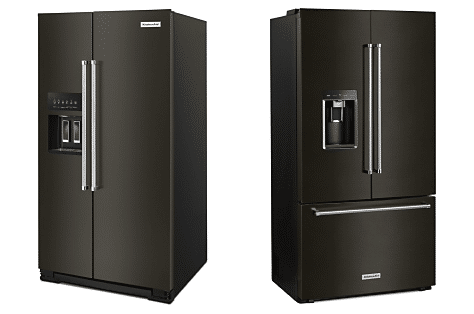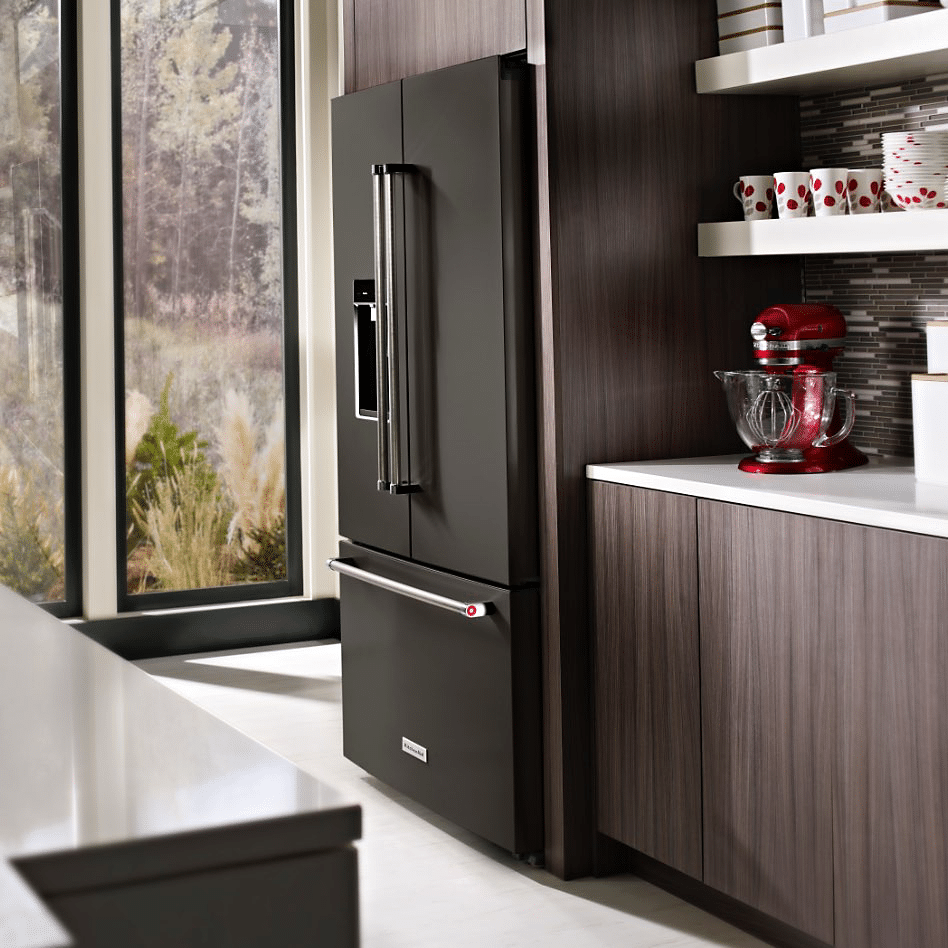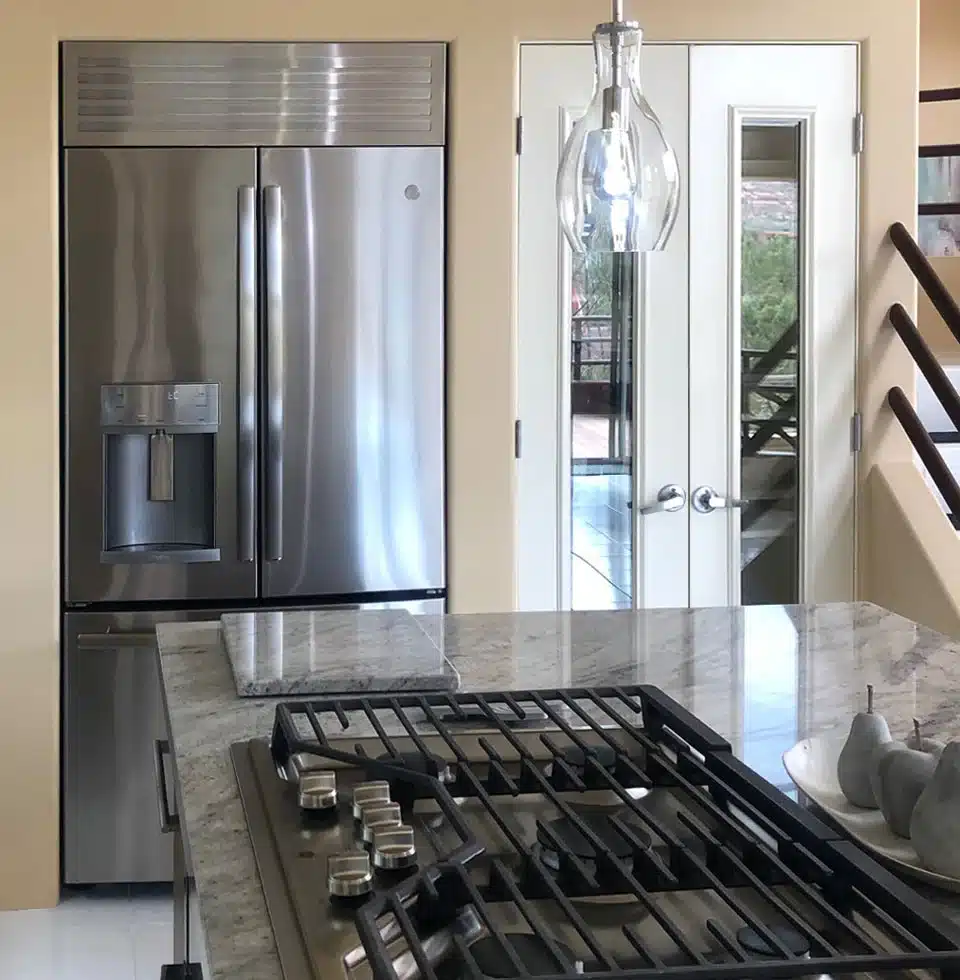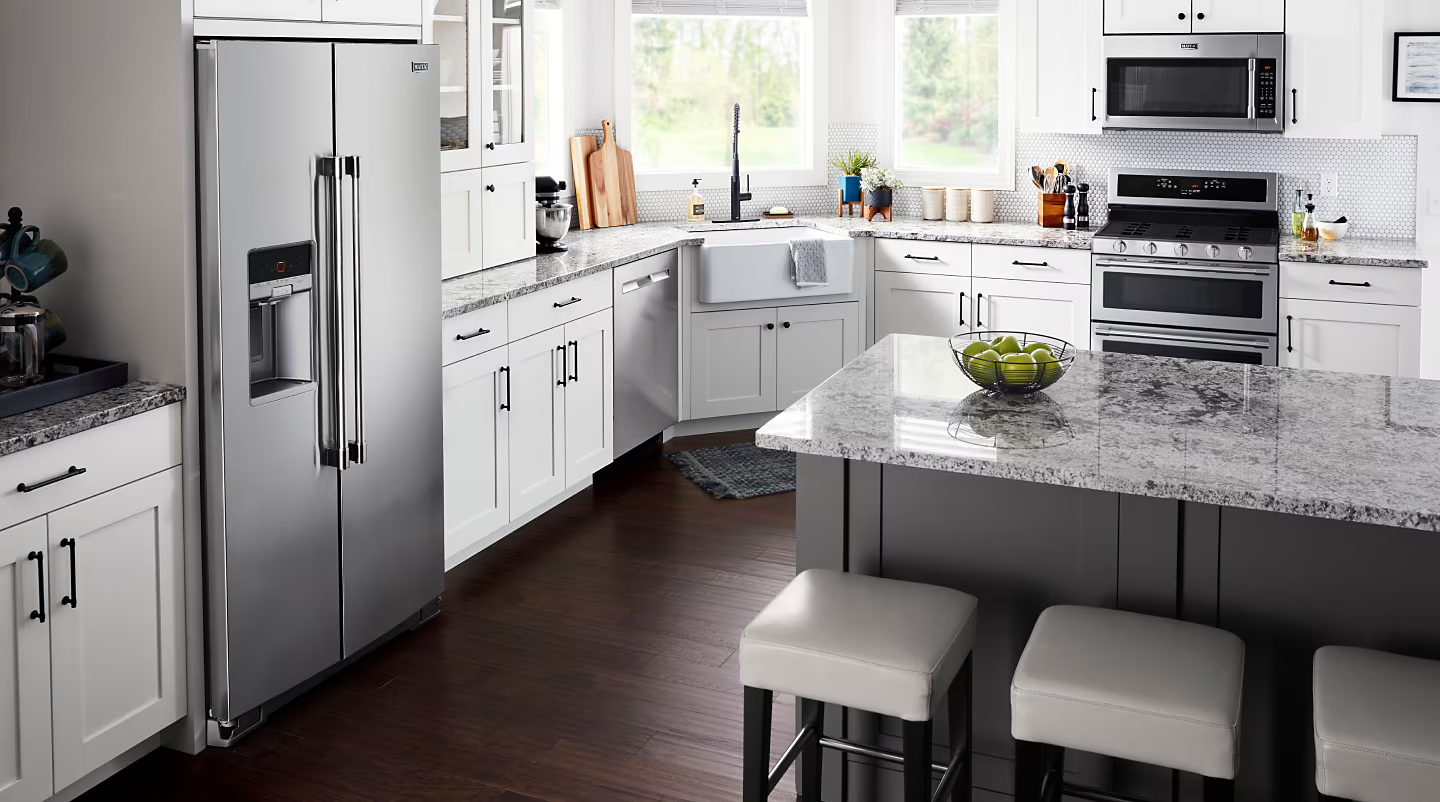Table of Contents
When it comes to choosing the perfect counter-depth refrigerator, understanding its dimensions is important. Counter-depth refrigerators are made to blend in perfectly with your kitchen cabinets, giving the impression of being sleek and integrated, in contrast to normal-depth refrigerators, which may extend beyond them. To guarantee a good fit, you must measure the width of your area. Since most counter-depth refrigerators are under 30 inches deep, they offer plenty of storage space without sacrificing a sleek appearance.
It’s important to measure a fridge’s depth and width before making a purchase. It is especially important to ensure the refrigerator slides into the designated area without sticking too far into the kitchen. The purpose of counter-depth refrigerators is to fit in with your kitchen cabinets, giving your space a polished and uniform appearance. Thus, attaining this smooth integration requires exact measurements.
Lets also explore about How Many Watts is a Refrigerator?
Exploring Various Types: French Door, Side by Side, and Top Freezer

Several varieties of counter-depth refrigerators are available, such as French door, side-by-side, and top freezer models. Depending on your preferences and kitchen arrangement, each offers a benefit. Top freezer types, in which the freezer is located above the refrigerator area, are simple and reasonably priced. This timeless and cost-effective style is ideal for tiny kitchens or those on a tight budget.
The freezer is located on one side of side-by-side refrigerators, which have two vertical sections. This arrangement facilitates item collection and organization by allowing easy access to both compartments. However, due to their reduced width, bigger objects like pizza boxes or platters might not fit in all the compartments.
The refrigerator section of a French door refrigerator has two side-by-side doors, with a bottom freezer drawer beneath. Wide shelves and lots of storage space are features of this design, which makes it popular with homes that need flexibility and storage space. Frozen foods can be conveniently stored in the bottom freezer drawer, while commonly used products can be easily accessed through the double-door refrigerator portion.
A Comparison between Counter Depth and Standard Depth

One frequently asked question is what separates counter-depth refrigerators from regular-depth refrigerators. Standard-depth refrigerators extend farther into the kitchen, which could disturb the aesthetics and flow of the room even if they may provide greater storage capacity. Counter-depth refrigerators, on the other hand, are lower and give the impression that they are built in, blending in well with your cabinetry. When choosing between the two, take into account the arrangement of your kitchen and the value of the breathing area.
The standard depth of a standard depth refrigerator is around 30 to 34 inches, which may be deeper than the depth of your kitchen cabinets. This could make the refrigerator appear large, and extra room might be needed to accommodate its protrusion. Counter-depth refrigerators, on the other hand, have a more integrated and streamlined appearance since they are made to fit with your cabinetry.
It’s important to consider your kitchen’s design and layout preferences when comparing counter-depth vs. standard-depth refrigerators. A counter-depth refrigerator can be the best option if you value smooth integration and a refined appearance. A normal-depth refrigerator, however, might be more appropriate if you have enough space in your kitchen and your main goal is to maximize storage capacity.
Measuring and considering the depth of the refrigerator
When estimating a counter-depth refrigerator, it’s crucial to take the depth measurement into account in addition to the width. This includes leaving adequate room for the doors to open fully without colliding with other cabinets or walls. Make sure there is enough space for the drawer to fully extend on bottom freezer types. Precise measuring guarantees excellent operation and hassle-free installation.
Consider the swing open area needed for the freezer drawers, refrigerator doors, and depth dimension. This guarantees clear access to the sections and guards against possible harm to the walls or surrounding cabinetry. Remember that certain counter-depth refrigerators have doors that can be reversed, giving you more options for where to put them and how to arrange them in your kitchen.
Making the Most of Storage Space and Making Use of Ventilation Room

Counter-depth refrigerators offer effective storage solutions to maximize the available space, even though they may have significantly less storage capacity than their regular depth counterparts. Use drawers, door bins, and adjustable shelves to organize stuff neatly. Furthermore, ensure there is enough space around the refrigerator to allow for adequate ventilation, promoting energy efficiency and peak performance.
Keeping the refrigerator sections organized properly might help maximize storage effectiveness. To keep related goods together and accessible, consider using dividers, trays, and storage boxes. In addition, keeping your refrigerator organized and decluttered on a regular basis may help avoid blockages and guarantee effective ventilation, both of which are critical for preserving food freshness and extending its shelf life.
Shopping for the perfect fit:
Take advantage of the most recent discounts on a few models to obtain the best value when purchasing a counter-depth refrigerator. Search for sales and markdowns from reliable online and physical merchants. Take into account elements like the brand’s reputation, energy efficiency rankings, and extra features like water and ice dispensers. By carefully examining the dimensions and layout, you can pick the ideal counter-depth refrigerator to fit your storage demands and compliment your kitchen design.
It’s best to measure your kitchen area precisely before making a purchase and take into account any potential obstructions or limitations that can interfere with installation. Doors and other structural features that could affect the refrigerator’s delivery and positioning are included in this. Before making a choice, look into consumer feedback and ratings to learn more about the dependability and performance of various models and counter depth refrigerator dimensions.
In conclusion, choosing the ideal counter-depth refrigerator for your kitchen requires an awareness of its proportions. Accurate dimensions and careful consideration of swing open space are essential for guaranteeing seamless integration and optimal functioning. Regardless of your preference for a side-by-side, French door, or top freezer arrangement. By optimizing storage efficiency and looking for the best savings, you may discover a counter-depth refrigerator that fulfills your needs and improves the visual appeal of your kitchen.

